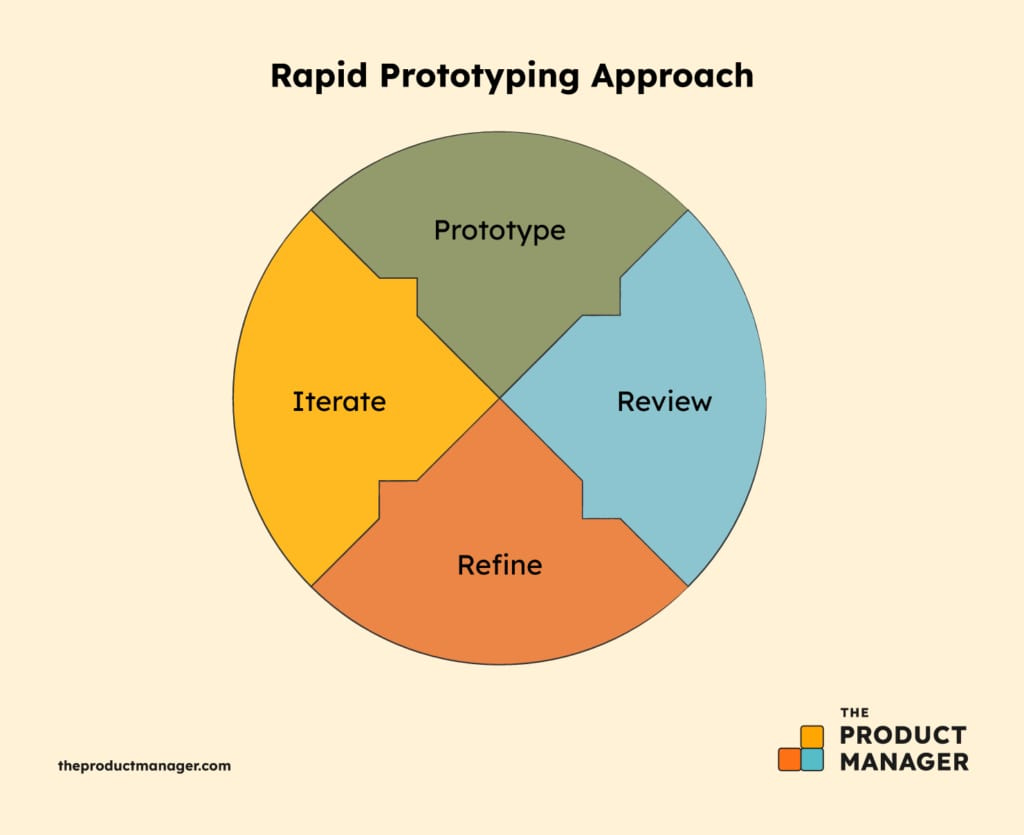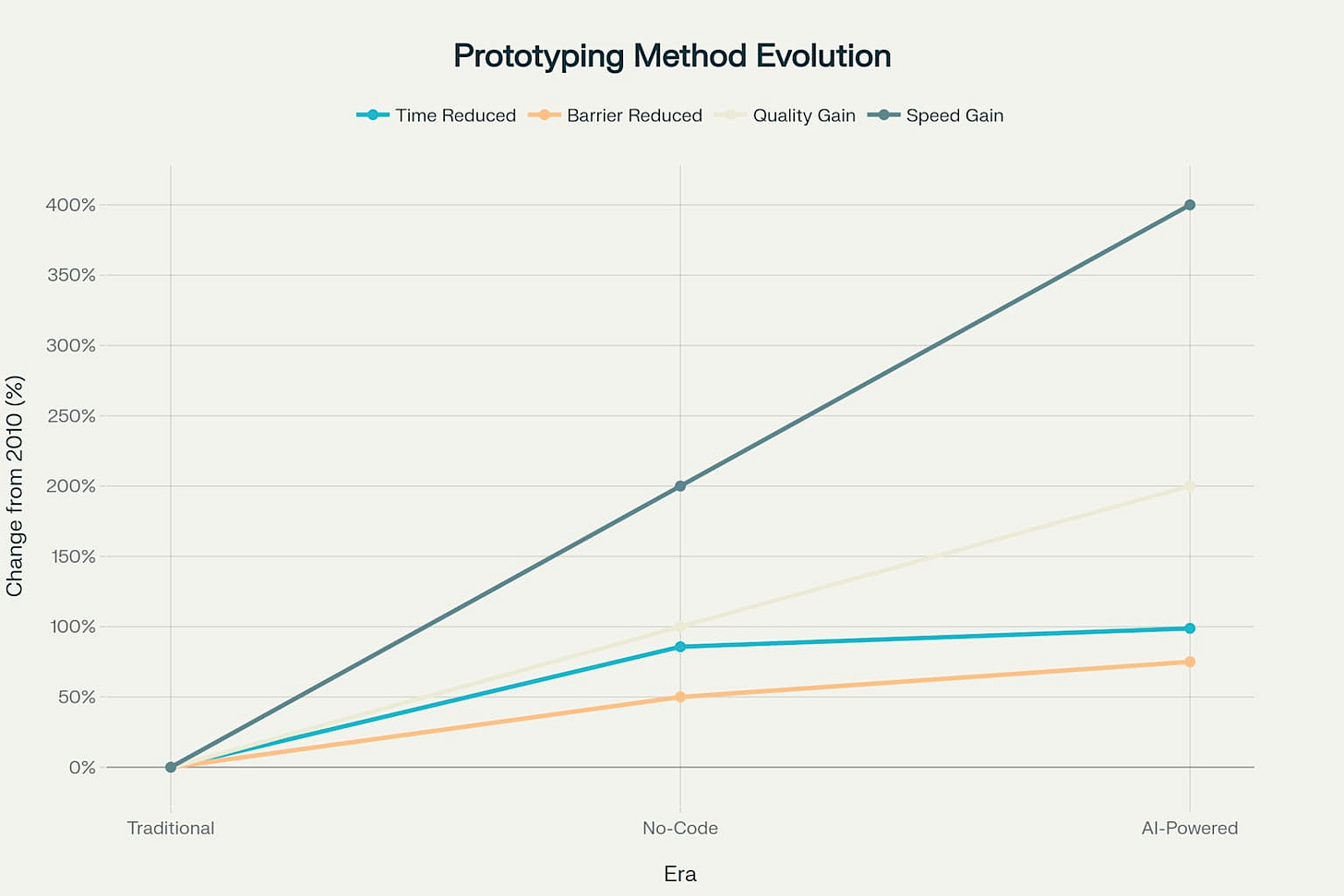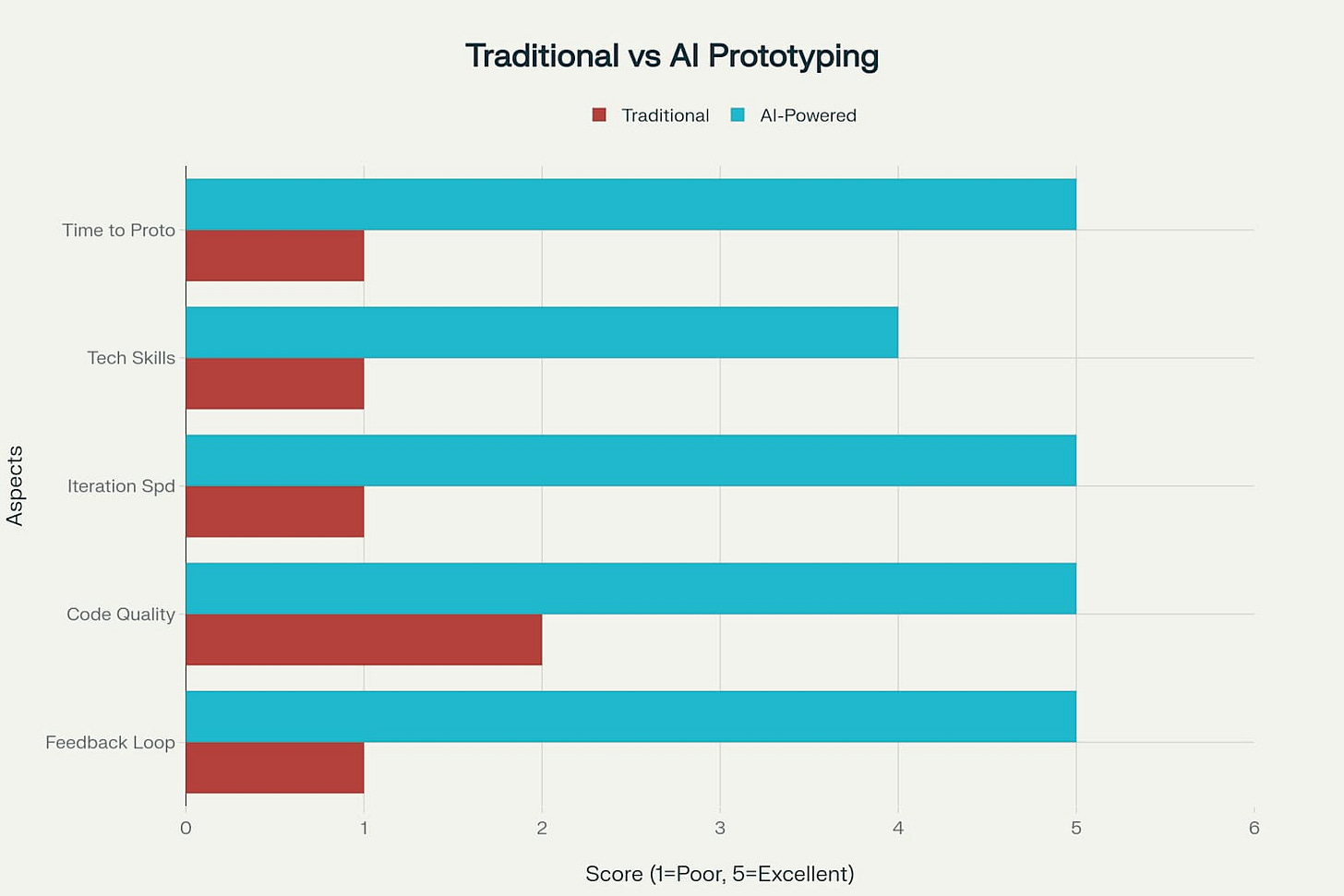The Concept Car Revolution
Part 2 - How AI-Powered Prototyping is Transforming Product Development
The automotive industry has long understood the power of concept cars—those bold, experimental vehicles that showcase future possibilities and test radical ideas before they hit the production line. Today, we're witnessing a similar revolution in product development, where AI-powered prototyping tools like Lovable are enabling teams to build their own "concept cars" for digital products. For product and technology leaders in the highly competitive and regulated industries like pharma and healthcare space, this shift represents more than just a new development tool—it's a fundamental change in how we can compete with larger organizations by moving faster and iterating more efficiently. The implications are particularly significant where rapid validation of concepts can dramatically reduce time-to-market while maintaining compliance requirements.
The Traditional Prototyping Bottleneck
For years, product teams have been trapped in a frustrating cycle that mirrors the challenges many of us face in platform development. You sketch an idea, spend weeks in Figma crafting pixel-perfect mock-ups, endure lengthy hand-off meetings with engineering, and watch your vision slowly drift away from reality during implementation. This traditional approach creates several critical problems that directly impact our ability to serve small to mid-size companies effectively.
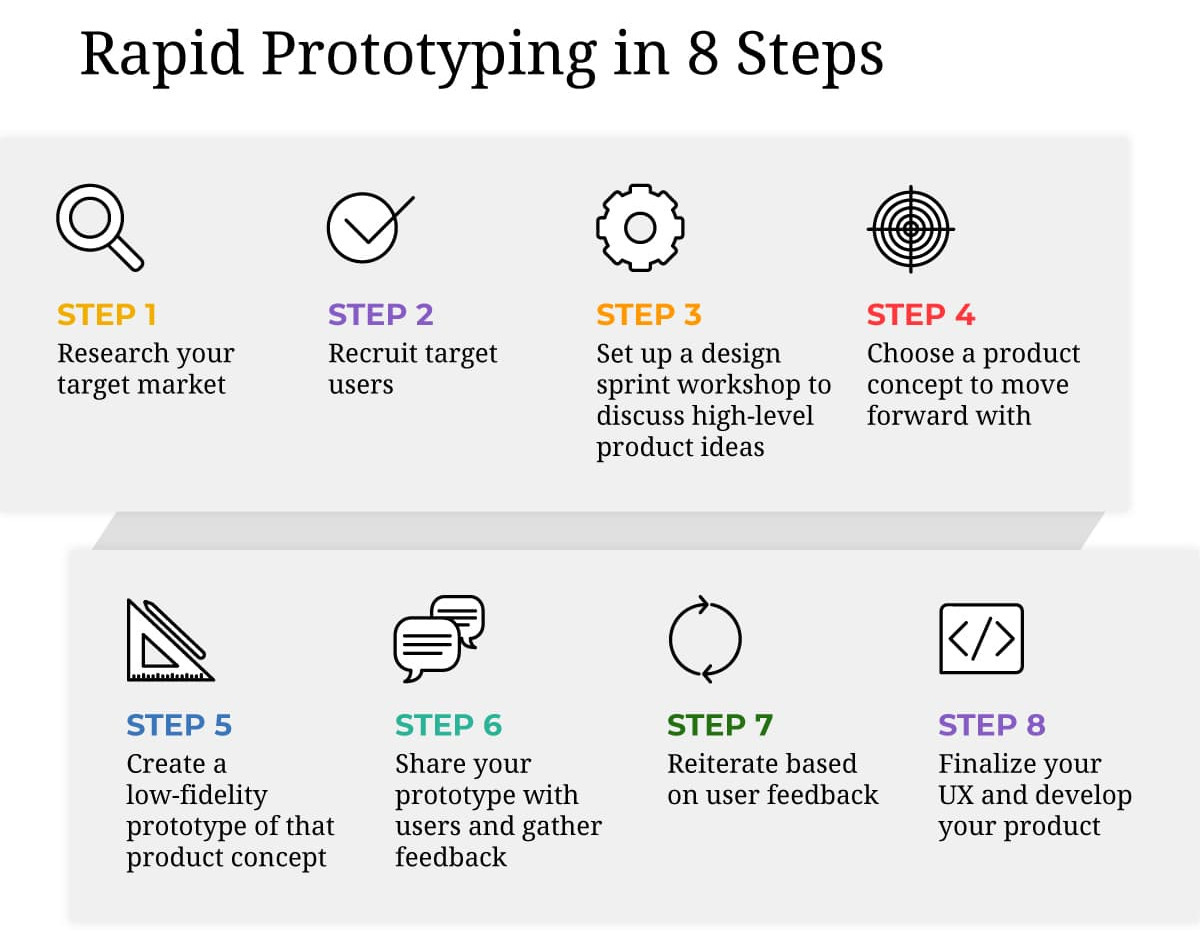
The traditional workflow typically follows this pattern: wire-framing and low-fidelity designs (weeks 1-2), high-fidelity Figma prototypes (weeks 3-4), design system documentation and hand-off (weeks 5-6), and finally engineering implementation with inevitable compromises (weeks 7-12). This process, while thorough, creates what industry expert Elie Majorel calls "four pain points that slow every release".
The Reality Gap emerges when technical constraints surface late in the development cycle, forcing expensive pivots or compromises that dilute the original vision.
Time Sink issues arise because an estimated 40-60% of design time is spent on pixel-perfect details that may not translate to the final product.
Communication Friction occurs during the hand-off between design and engineering, which remains one of the most error-prone phases in product development.
Finally, Limited Iteration happens because with weeks invested in each prototype, teams become reluctant to make substantial changes based on user feedback.
The Prompt-to-Code Paradigm
Enter the new paradigm that's reshaping how we approach prototyping: prompt-to-code development. Tools like Lovable, v0, and Cursor are fundamentally changing the landscape by eliminating the gap between idea and working software. This transformation is particularly relevant for leaders building platforms for pharmaceutical and healthcare companies, where rapid validation can be the difference between capturing market opportunities and watching them slip away.
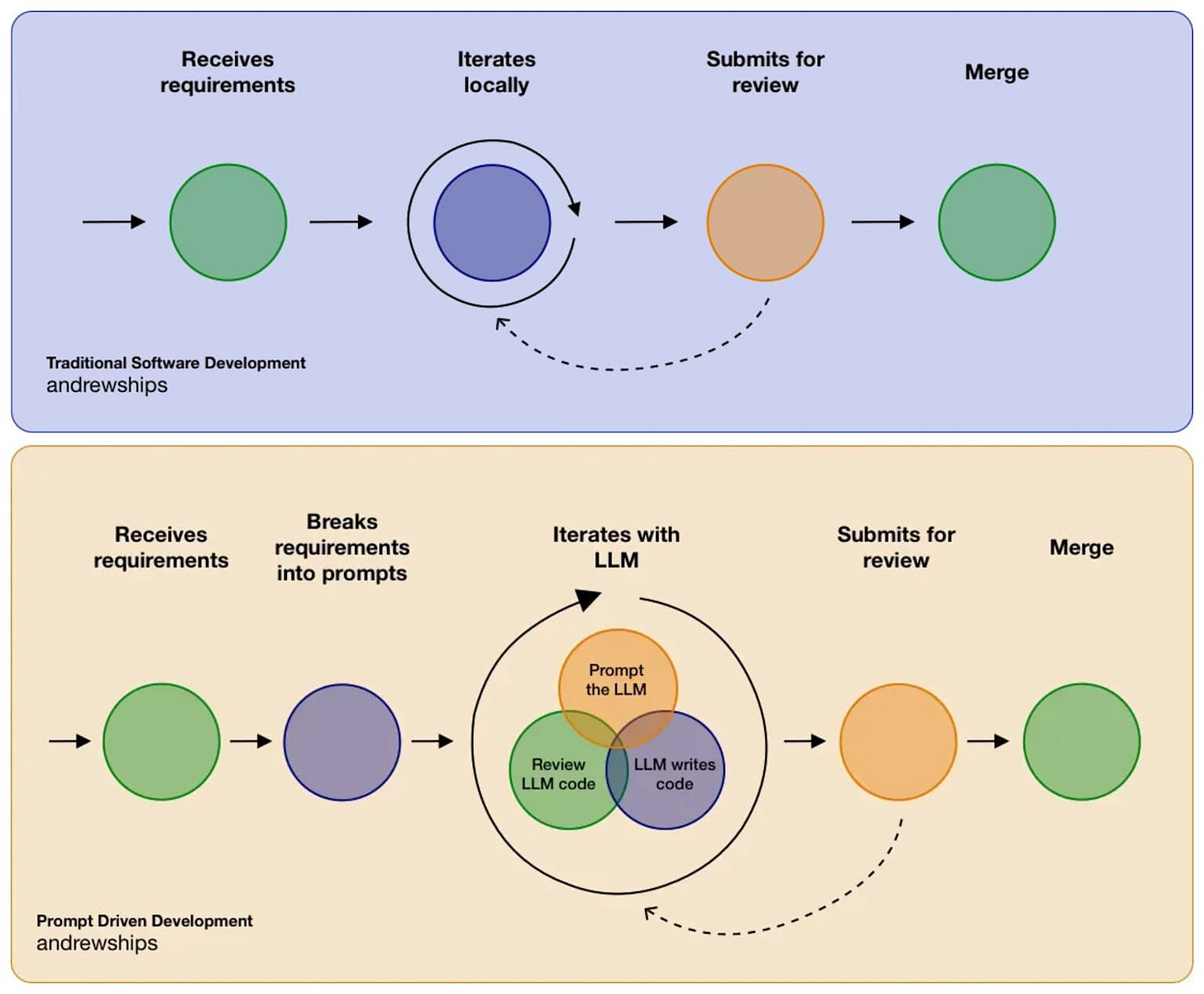
Consider this real scenario that many of the creators like me follow everyday. For example, last saturday I sketched my idea for a market place platform that provides high quality prompts, and copied the flow into Perplexity labs. Then asked Sonnet 4 to write a clear specification and converted that into a for Lovable, pressed generate, and two hours later a working prototype that is ready to launch my own side hustle. I even asked Gemini Pro to create a pitch and did a 10 minute pitch to engineers to join me in this vision. This represents a fundamental shift from static designs to functional prototypes that can be immediately tested and iterated upon with no or minimal investment. See the result of 1 hour vide coding with AI.
The Lovable Advantage for Platform Development
Lovable stands out in the AI-powered development space for several reasons that directly align with the needs of product and technology leaders building platforms.
Full-Stack Generation means that unlike traditional no-code tools, Lovable generates both frontend and backend code, creating truly functional applications from simple prompts. This is particularly valuable when building internal tools or proof-of-concepts for pharmaceutical clients.
Developer-Friendly Output ensures that the generated code isn't locked in a proprietary platform—it's exportable, version-controlled, and can be seamlessly handed off to engineering teams.
Rapid Iteration capabilities mean that changes that would take hours in traditional tools happen in minutes with natural language prompts.
GitHub Integration allows every project to sync directly to GitHub, making collaboration and version control seamless.
It comes with its own downside. From my experience, Lovable is great for green field approach to ideas or a side car that branches out to test your hypothesis. A perfect segway to build product concept cars.
Building Your Digital Concept Car
The rapid prototyping approach includes prototyping, review, refine, and iterate. The concept car analogy is particularly apt for understanding this new prototyping paradigm. Just as automotive concept cars allow manufacturers to test radical design ideas, gauge market reaction, validate technical feasibility, and generate stakeholder excitement, AI-powered prototypes serve the same function for digital products. They're not meant to be production-perfect—they're meant to be fast, functional, and convincing enough to validate core assumptions.
The evolution from traditional design methods to AI-powered development represents a dramatic shift in capabilities. The data shows that we've moved from 336-hour prototyping cycles in the traditional era to just 4 hours in the AI-powered era, while simultaneously improving code quality and iteration speed. This transformation is particularly significant for technology leaders who need to demonstrate value quickly to stakeholders. Here's what the modern prototyping workflow looks like for platform development:
Day 1 and Hour 1 involves sketching the basic flow in Miro or on paper.
Hour 2 focuses on generating a detailed spec using AI tools like Claude or ChatGPT.
Hours 3-4 are spent creating a working prototype with Lovable.
Hour 5 involves deploying and sharing with stakeholders.
Day 2 and beyond focus on iterating based on real user feedback.
This represents a 90%+ reduction in time-to-prototype while producing output that's closer to the final product. For early stage start ups, this speed improvement is crucial for staying competitive in a rapidly evolving environment.
Prompt Engineering for Success
The key to maximizing AI-powered prototyping lies in effective prompt engineering. Based on research from successful implementations, here's a template that consistently produces high-quality results platforms: The prompt should include core functionality (3-5 main features, data sources and integrations, user types and permissions), user experience elements (key user journeys, error states and edge cases, responsive design requirements), technical requirements (database structure and relationships, API integrations needed, authentication and security requirements), and acceptance criteria (measurable success metrics, test scenarios, performance requirements). Here is an example template that I used and I remove the core user story and features as I wish to bring my prompt gallery app to market. You can also understand why I am building this prompt gallery - This is key to success and many of the creators still struggle with it and I want to democratize prompt engineering.
**Supabase Setup**
- Configure Supabase project and database connection for the design system.
**Supabase Authentication**
- Implement user authentication for accessing and managing design system components.
**Link Component Creation**
- Build a reusable Link component using React and TypeScript with HTML anchor (`<a>`) elements.
**CSS Modules Styling**
- Style the Link component using CSS Modules for scoped and maintainable styling.
**Storybook Integration**
- Document and showcase the Link component in Storybook for visual testing and documentation.
**TypeScript Typing**
- Define TypeScript interfaces/props for the Link component to ensure type safety.
**Accessibility Compliance**
- Ensure the Link component meets accessibility standards (e.g., keyboard navigation, ARIA attributes).
**Responsive Behavior**
- Implement responsive styling to ensure the Link component works across device sizes.
**Interactive States**
- Style and handle hover, focus, active, and disabled states for the Link component.
**Unit Testing**
- Write unit tests (e.g., Jest) to validate Link component functionality and edge cases.
**Documentation**
- Provide clear usage guidelines and prop definitions in Storybook or README.Competitive Advantage of Concept car via AI Prototyping
Organizations that master AI-powered prototyping gain several critical advantages that are particularly relevant for companies serving the pharmaceutical and healthcare sectors.
Speed to Market means ideas can be validated and refined in days instead of months, dramatically accelerating innovation cycles.
Risk Reduction allows failed concepts to be identified and discarded quickly, before significant resources are invested.
Stakeholder Alignment becomes easier because working prototypes are far more compelling than static mockups, making it easier to secure buy-in and funding from conservative healthcare executives.
Engineering Collaboration improves because teams can start with functional code rather than trying to interpret visual designs, reducing miscommunication and implementation errors.
The data clearly demonstrates the advantages: traditional prototyping methods require high technical skills and result in slow iteration speeds, while AI-powered methods require only natural language skills and enable real-time iteration. For product and technology leaders building platforms for small to mid-size companies, this represents a fundamental competitive advantage.
Overcoming Implementation Challenges
While the benefits are compelling, adopting AI-powered prototyping isn't without challenges, particularly in regulated industries.
Brand Consistency challenges arise when AI-generated designs may not align with strict brand guidelines required in pharmaceutical applications. The solution involves developing a library of proven prompts that include brand-specific requirements and treating the initial output as a functional foundation rather than a final design.
Security Concerns are paramount in modern applications, where AI-generated code may include security vulnerabilities. The solution requires implementing security reviews as part of the prototyping process, with many tools now including built-in security scanning capabilities.
Team Adoption challenges occur when designers resist moving away from familiar tools. The solution involves starting with internal tools and low-stakes projects, demonstrating value through results rather than mandating adoption.
Prompt Consistency issues arise when similar prompts produce inconsistent results. The solution involves treating prompts like code—version controlling them, documenting what works, and building a shared library of effective patterns.
mplementation Strategy for Healthcare Platforms
For technology leaders considering this transition, here's a phased approach that accounts for the unique requirements of pharmaceutical and healthcare clients
.Phase 1: Experimentation (Month 1) involves selecting 1-2 internal tools for AI-powered prototyping, training core team members on prompt engineering, and documenting learnings and best practices
.
Phase 2: Pilot Project (Month 2-3) requires choosing a customer-facing feature with limited scope, using AI-powered prototyping for the entire development cycle, and measuring time savings and quality improvements
.Phase 3: Scaled Adoption (Month 4-6) involves expanding to multiple projects and teams, developing standardized prompt libraries, and integrating with existing development workflows.Phase 4: Full Integration (Month 6+) means making AI-powered prototyping the default approach, training the entire product organization, and continuously optimizing based on results.
Key Takeaways for Product and Technology Leaders
The shift to AI-powered prototyping represents more than just a new tool—it's a fundamental change in how we think about the relationship between design and engineering. As Kevin Weil, Chief Product Officer at OpenAI, recently noted: "We should show live demos instead of files. Build a proof in thirty minutes and test ideas fast". Concept cars allows:
Speed as Strategy: In competitive healthcare markets, the ability to rapidly prototype and validate ideas becomes a sustainable competitive advantage.
Skills Evolution: Teams need to develop prompt engineering capabilities alongside traditional design and development skills.
Process Redesign: Traditional handoff processes become obsolete when prototypes are already functional code.
Risk Mitigation: Faster iteration cycles mean failed ideas are identified and abandoned before significant investment.
Stakeholder Engagement: Working prototypes are dramatically more effective for securing buy-in than static presentations, particularly important when dealing with conservative healthcare executives.
The future belongs to teams that can turn ideas into working software in hours, not weeks. The tools are here, the techniques are proven, and the competitive advantage is waiting for those bold enough to embrace the concept car mentality in software development.The question isn't whether to adopt AI-powered prototyping / Concept cars, but how quickly you can integrate it into your development process to maintain competitive advantage in the rapidly evolving healthcare technology landscape.
.








